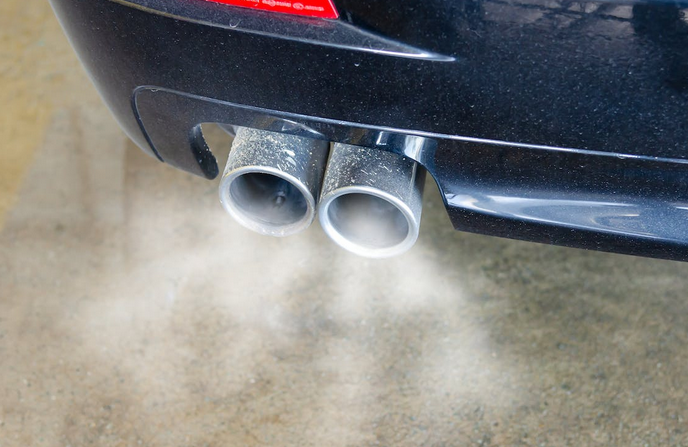Like most drivers, you probably don’t give much thought to your exhaust system. But the fact is, it’s one of the most important parts of your car. Your exhaust system helps keep your engine running efficiently and protects it from harmful emissions. In this blog post, we will discuss the exhaust system parts and explain why they are important.
Exhaust Manifold
The first part of your exhaust system, connected to the cylinder head, is the exhaust manifold. It collects and directs gasses from each cylinder into the exhaust pipes. The material used for this part depends on your engine type: cast iron, aluminum or stainless steel. It’s important to keep this area free from corrosion or clogs, as it will affect the efficiency of your engine.
Catalytic Converter
 The catalytic converter is designed to reduce harmful emissions from exhaust gasses. It converts carbon monoxide, hydrocarbons and nitrogen oxides into harmless compounds like water vapor and nitrogen gas.
The catalytic converter is designed to reduce harmful emissions from exhaust gasses. It converts carbon monoxide, hydrocarbons and nitrogen oxides into harmless compounds like water vapor and nitrogen gas.
If the catalytic converter is not functioning properly, it can lead to increased emissions and other engine problems.
Oxygen Sensor
The oxygen sensor is another important part of your exhaust system. It measures the amount of oxygen from your engine and helps adjust the air-fuel mixture ratio for optimal efficiency. When the oxygen sensor isn’t working correctly, it can lead to poor fuel economy and increased emissions.
Exhaust Pipes
 The exhaust pipes are responsible for carrying the gasses away from the engine. They come in various materials, including stainless steel, aluminum and mild steel. The size and shape of these pipes affect the sound of your car’s exhaust, so it’s important to get the right fit for your vehicle.
The exhaust pipes are responsible for carrying the gasses away from the engine. They come in various materials, including stainless steel, aluminum and mild steel. The size and shape of these pipes affect the sound of your car’s exhaust, so it’s important to get the right fit for your vehicle.
The muffler is the last part of your exhaust system, and its primary purpose is to reduce the noise generated by the engine. It does this by diffusing and reflecting sound waves away from the vehicle. The material used for this part also varies depending on engine type: stainless steel, aluminized steel, or a composite material like fiberglass.
Resonator
The resonator, also known as a “glasspack,” is an optional component of your exhaust system. Its purpose is to reduce backpressure, which can lead to engine performance issues. It does this by creating sound waves that cancel out the unwanted noise produced by the engine, providing better fuel efficiency and power output.
A properly functioning exhaust system is essential for your car’s performance and the environment. The parts discussed in this blog post are some of the most important components in your exhaust system, so ensure they’re kept up to date and serviced regularly. Doing so can ensure that your vehicle is running efficiently and keeping harmful emissions to a minimum.




 While it’s not always necessary, installing a snorkel is a great way to ensure your engine can get the oxygen it needs when crossing through water. This modification will help keep your engine from ingesting water and stalling out in the middle of a stream or river.
While it’s not always necessary, installing a snorkel is a great way to ensure your engine can get the oxygen it needs when crossing through water. This modification will help keep your engine from ingesting water and stalling out in the middle of a stream or river. Among all, the most vital modification for off-roading is a roll cage. Not only does it add an extra layer of safety, but it also ties the body together and gives your vehicle additional strength and stability. Make sure to look for one made from high-quality materials designed specifically for your 4×4. Additionally, consider installing some body protection, such as skid plates and rock sliders, to protect your 4×4 from the bumps and debris of off-roading.
Among all, the most vital modification for off-roading is a roll cage. Not only does it add an extra layer of safety, but it also ties the body together and gives your vehicle additional strength and stability. Make sure to look for one made from high-quality materials designed specifically for your 4×4. Additionally, consider installing some body protection, such as skid plates and rock sliders, to protect your 4×4 from the bumps and debris of off-roading.




